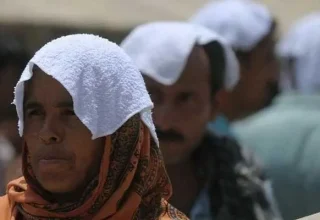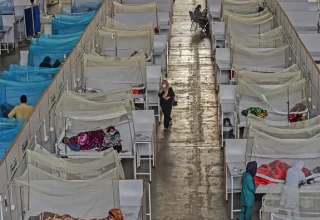
As the world faces alarming increases in temperatures and heat waves, cities are taking steps to protect their citizens from the growing climate crisis.
The situation is becoming increasingly troubling, with records showing that this year’s temperature rise is only the beginning of an alarming trend. According to the United Nations Intergovernmental Panel on Climate Change (IPCC), temperatures will continue to rise for the next three decades, even if carbon emissions drop sharply immediately. It calls for urgent and innovative action to deal with the challenging realities of a hot future.
Home to more than half of the world’s population, cities have become hotspots for extreme heat due to the “urban heat island” effect. The prevalence of asphalt, cement, glass and steel absorbs and retains heat, making cities up to seven degrees Fahrenheit warmer than their surrounding suburbs and rural areas. The consequences of such rising temperatures are devastating. The heatwave has already claimed hundreds of lives, damaged infrastructure and affected workforce productivity, with vulnerable and marginalized populations bearing the brunt of the impact.
To address this deepening crisis, a pioneering approach has been taken by some cities, which involves appointing a dedicated Chief Heat Officer (CHO) to develop and implement plans to respond to rising temperatures. The cities of Miami, Phoenix, Athens, Freetown, Monterrey and Santiago have taken this important step.
CHOs play an important role in identifying the unique challenges facing each city and developing appropriate strategies to address them. For example, CHO in Miami works with volunteers and universities to install temperature sensors throughout the city, ensuring accurate readings and enabling residents to prepare for extreme temperatures. The CHO of Athens compiled a cooling guide with technical recommendations for green spaces and water features to mitigate the effects of heat.
Community engagement is also an important component of cities’ heat protection plans Cities like Miami have begun training programs for emergency response volunteers to provide first aid to heatstroke victims, enabling citizens to play a critical role in saving lives. Furthermore, heatwave classification is being tested in different cities to raise awareness about the dangers of extreme heat and draw public attention to this invisible yet deadly phenomenon.
As cities rise to the challenge, their proactive steps to combat heatwaves raise hopes for a cooler future. By taking swift action, implementing innovative solutions and engaging communities, cities are playing a critical role in protecting their residents against the unabated rise in temperatures ahead.




































